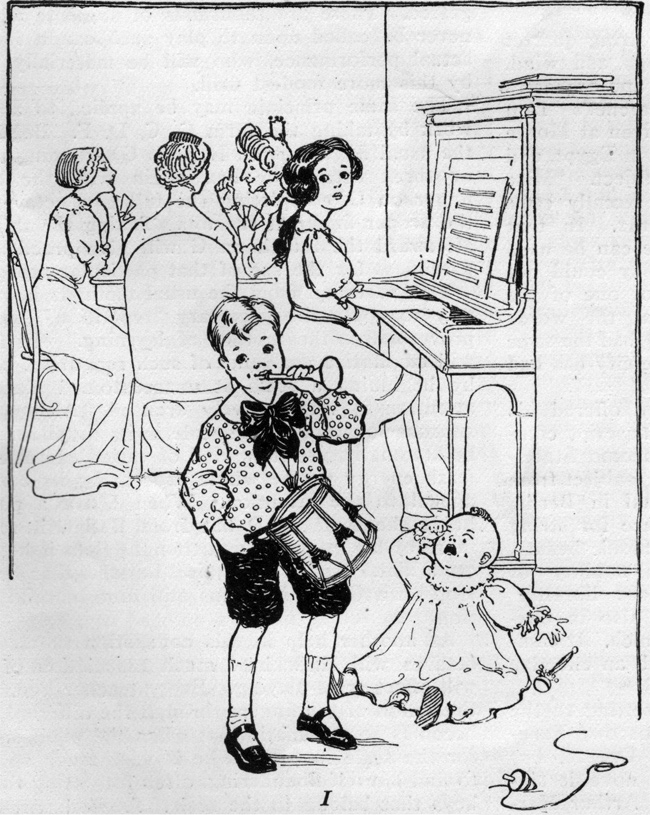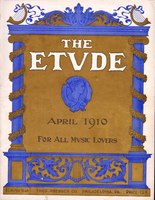We herewith present the first of a series of educational cartoons. The force of the cartoon in remedying social evils has been tremendous. Dickens and Cruickshank overturned the iniquities of the British School system by means of their verbal and pictorial cartoons. Tom Nast made Boss Tweed say: “My people can’t read—but when Tom Nast draws a picture of me with my hand in the other fellow’s pocket, the game is up.” The use of comic pictures to show an evil at a glance has never been applied to the educational side of music hitherto.

WHY DOESN’T SHE GET AHEAD?
Surely a game of bridge in one corner of the room and a toy symphony in the other should not take Sadie’s attention away from the fascinating diversion of a Czerny study. Why not relieve the monotony of practice by a little excitement ? Of course, concentration is unnecessary if mamma pays enough to engage a teacher to be with Sadie one hour a week. If Sadie doesn’t get ahead, scold her and make it hot for the teacher. Never fail to blame the teacher. He’s accustomed to it.

GREAT HEAVENS! YOU PLAYED A WRONG NOTE!
Of course, Sadie couldn’t be made to realize that she played a sharp instead of a flat if the teacher did not tear his hair and storm around the room. Moreover, the teacher who gets into a rage at the most trifling mistake must surely have a beneficial effect upon Sadie’s delicate nervous system. How unnecessary it is to explain the difficulty quietly and intelligently when one can become so picturesque by imitating a maniac. What value has patience in teaching, anyhow?



